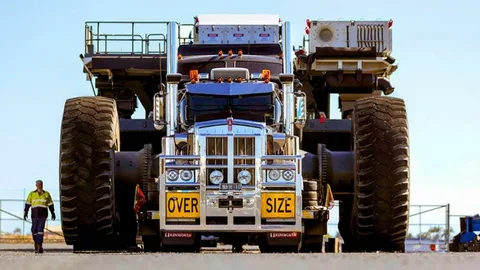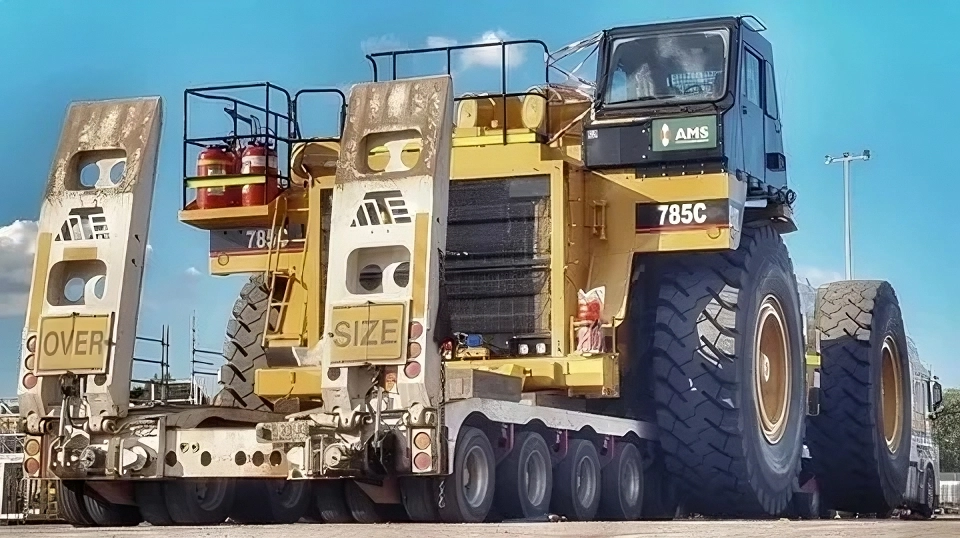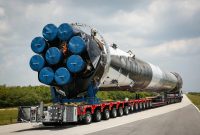In a world driven by progress and innovation, engineers constantly push the boundaries of what is possible. While we often marvel at architectural wonders and cutting-edge technology, there is another facet of engineering that rarely makes headlines but is equally awe-inspiring: the realm of mega engineering. This is where experts move the world’s heaviest loads, from massive bridges to colossal structures, and redefine what can be achieved. In this exploration, we delve into the astonishing world of mega engineering and the remarkable feats that have made engineers masters of moving the world’s heaviest loads.

The World’s Heaviest Loads
When we speak of the world’s heaviest loads, it’s essential to grasp the sheer magnitude of these undertakings. These are not just big projects; they are colossal, gargantuan endeavors that challenge the limits of human ingenuity and modern technology.

One of the most iconic examples of mega engineering is the transportation of oversized cargo, such as oil rigs and industrial machinery. These items often weigh thousands of tons, and their transportation requires intricate planning and innovative solutions. Specialized transporters, capable of carrying immense loads, are designed to carefully navigate roads and bridges while distributing weight evenly to prevent structural damage. The immense size and weight of these cargo items make even routine transports a marvel of engineering.

Engineering Marvels: Moving Oil Rigs and Beyond
Moving an oil rig, with its towering structure and substantial weight, is a testament to human engineering prowess. The process involves disassembling the rig into manageable sections, which are then transported to the destination by a fleet of specialized vehicles. These transportation units are often self-propelled modular transporters (SPMTs), which consist of multiple axles and can be interconnected to distribute the weight effectively. The careful coordination of these transporters ensures that the rig reaches its destination safely.

Similarly, the construction of massive bridges and structures showcases the innovative spirit of mega engineering. The Akashi Kaikyō Bridge in Japan, also known as the Pearl Bridge, is a prime example. Spanning the Akashi Strait, this suspension bridge measures a staggering 6,532 feet in length. It’s not only a triumph of engineering but also an architectural marvel. Moving beyond the realm of standard bridge construction, engineers had to deal with harsh environmental conditions, including typhoons and earthquakes.
The Panama Canal Expansion: A Mega Engineering Feat
The expansion of the Panama Canal is another feat of mega engineering that reshaped global trade routes. The original canal, completed in 1914, facilitated the transit of ships between the Atlantic and Pacific Oceans. However, it became clear that larger vessels known as New Panamax needed a more spacious and modern passage. This prompted the Panama Canal Authority to embark on a monumental expansion project.

The expansion involved excavating millions of cubic meters of earth and rock to create a new set of locks, each capable of accommodating massive ships. The project also included the construction of an artificial lake and a water-saving basin system. This endeavor not only expanded the capacity of the canal but also addressed environmental and water conservation concerns.
Sky-High Engineering: Burj Khalifa
The Burj Khalifa in Dubai is yet another astonishing achievement in the world of mega engineering. This soaring skyscraper stands at a jaw-dropping 2,717 feet, making it the tallest man-made structure in the world. Building a structure of this height required a unique approach to materials, design, and construction.
To overcome the challenges associated with extreme height and the region’s high temperatures, engineers developed innovative systems for cooling and water distribution. The Burj Khalifa’s sleek design not only captivates the eye but also offers stability and resistance to wind and seismic forces.
The Extraterrestrial Frontier: Mega Engineering in Space
Mega engineering extends beyond Earth’s boundaries and ventures into the cosmos. The International Space Station (ISS) is a shining example of human collaboration and innovation. Orbiting Earth, the ISS is a marvel of engineering, comprising multiple interconnected modules that house astronauts and advanced scientific equipment.
The construction of the ISS involved launching components into space and assembling them in microgravity. This required precise planning and coordination among different space agencies, including NASA, Roscosmos, and the European Space Agency.
Conclusion
Mega engineering is the epitome of human achievement, pushing the boundaries of what is possible. From moving colossal cargo to constructing iconic bridges and skyscrapers, and even extending our engineering prowess into the vast expanse of space, mega engineering showcases our ability to master the world’s heaviest loads.
As we continue to explore new frontiers and tackle ambitious projects, engineers and their innovative solutions will remain at the forefront of human progress. Their endeavors in mega engineering inspire us to dream bigger, reaching new heights, and proving that with dedication, creativity, and the power of collective knowledge, we can indeed become masters of moving the world’s heaviest loads.




